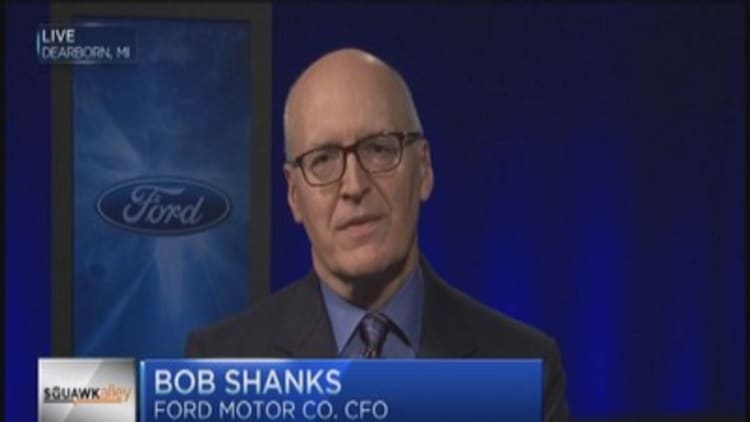
Bigger is once again better—at least when it comes to the type of vehicle many Americans prefer to drive.
Sales and profits coming from large sport utility vehicles and full-size pickups are giving automakers a welcome financial boost, as the segment's popularity is driving customers into dealerships, and getting them to spend more on the once-criticized segment.
In the third quarter, General Motors said improved pricing on its full-size SUVs generated $400 million in extra profits. During the same period, Ford said higher prices on its SUVs and the F-Series pickup boosted its profits in North America by $281 million.
Read MoreNHTSA apologizes for botched air bag warnings
According to Truecar, the average price customers are paying for brand new large SUVs has jumped a staggering 10.9 percent in the last year; in the third quarter alone, the average full-size SUV sold for $55,723, up almost $5,500 compared to the same time last year.
"It's quite rare to see the price of a type of vehicle jump as much as full-size SUVs have in the last year," said Larry Dominique, president of ALG, a subsidiary of Truecar. "It's clear that everyone who wanted to erect a tombstone for the big SUV spoke a little too soon."
Newer models, better design
According to research firm Autodata, large SUV sales are up 15.6 percent this year. That compares with total auto sales in the U.S. that are up only 5.5 percent.
Part of what's fueling demand in the segment is the lineup of large SUVs has been refreshed in the last couple of years. A few examples are the Chevy Tahoe and the GMC Yukon, two of the most popular full-size SUVs. This year, Tahoe sales are up 17.3 percent, while Yukon sales have surged 62.3 percent.
Read MoreIs bigger better? Demand soars for trucks, SUVs
"The new models are much better designed," Dominique said. "Look at the new Yukon or Tahoe. They now have third rows that fold completely into the floor, so it's a flat floor in the cargo area."
The changes in styling not only make the large SUVs more functional—they also update models that were looking old and stale. This has led to a number of drivers looking to upgrade their older models.
"The replacement demand for large SUVs and pickups is quite robust right now," Ford CEO Mark Fields said. "You combine that with the new products we have right now and it's reflected in stronger pricing."
Lower gas prices, lower cost of ownership
Another factor driving demand for large SUVs is the fact gas prices have been in check this year, and even started dropping over the last couple of months.
AAA said the average price for a gallon of gas in the U.S. is now $3.07, with 17 states selling gas for less than $3 a gallon.
Read MoreGM issues air bag warning to owners of some models
"As the cost of gas has dropped, so has the cost of ownership," Dominique said. "When people spend less on gas, the lifestyle component comes into play. They're willing to pay to get the vehicle they want."
In addition, large SUVs have become more fuel-efficient. Take the four-wheel drive 2015 Chevy Tahoe, for example. Its fuel-economy rating says the SUV will deliver 16 miles per gallon in the city and 22 miles per gallon on the highway. While it's certainly not blockbuster mileage compared with a midsize car or gas electric hybrid sedan, it's an improvement from the 2008 model's 14 mpg in the city and 19 mpg on the highway.
Read MoreWhat's in a Tesla? This company broke one apart to find out
"There will always be a segment of the population that wants a large SUV. For those people, the mileage on the new full-size SUVs is improving and that makes the models more attractive," Dominique said.


